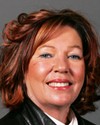Well, to start with, you have to have paid distribution to qualify for the program overall. So if you have free circulation only through Publi-sac, you won't make it.
If you are selling copies on the newsstand or through subscribers, you will get funding, but only based on the copies you sell. Once you receive that, as a company, if you want to invest it in putting more free copies in Publi-sac you could, but the result of that would be that you would probably end up losing your paid subscribers and you'd end up getting no more money in future years.


